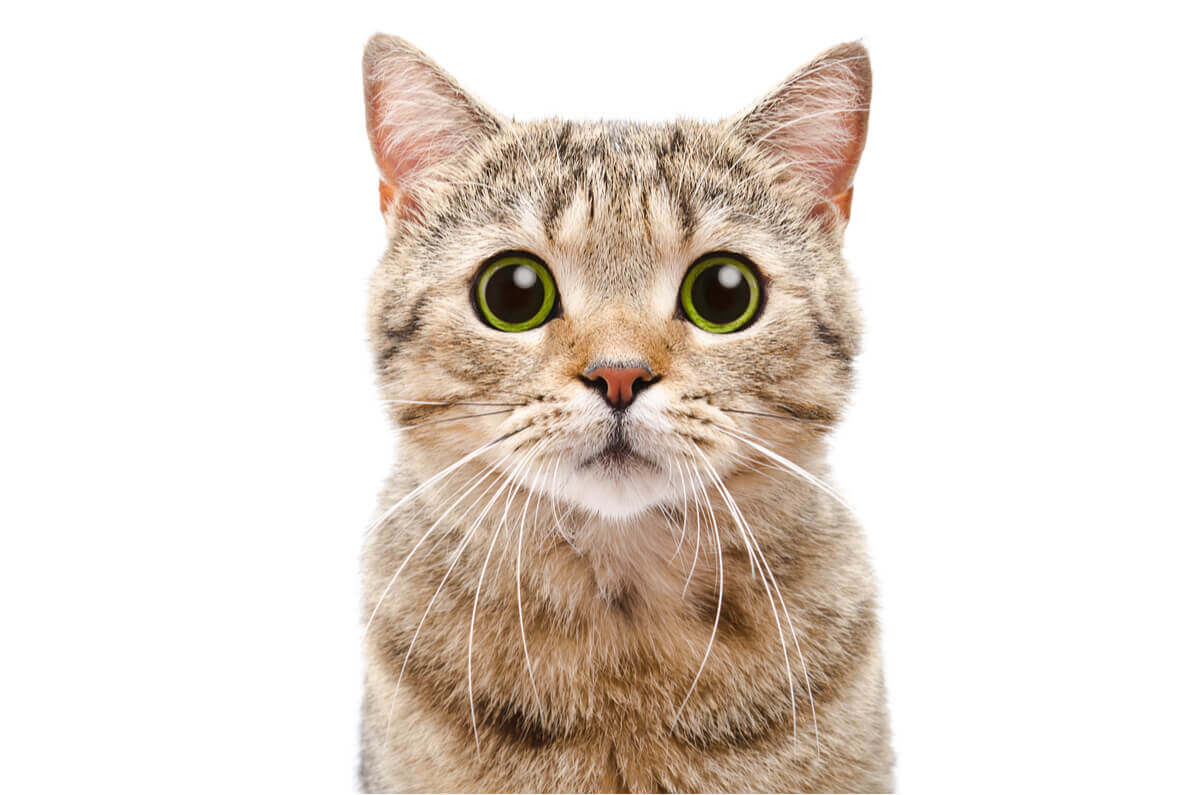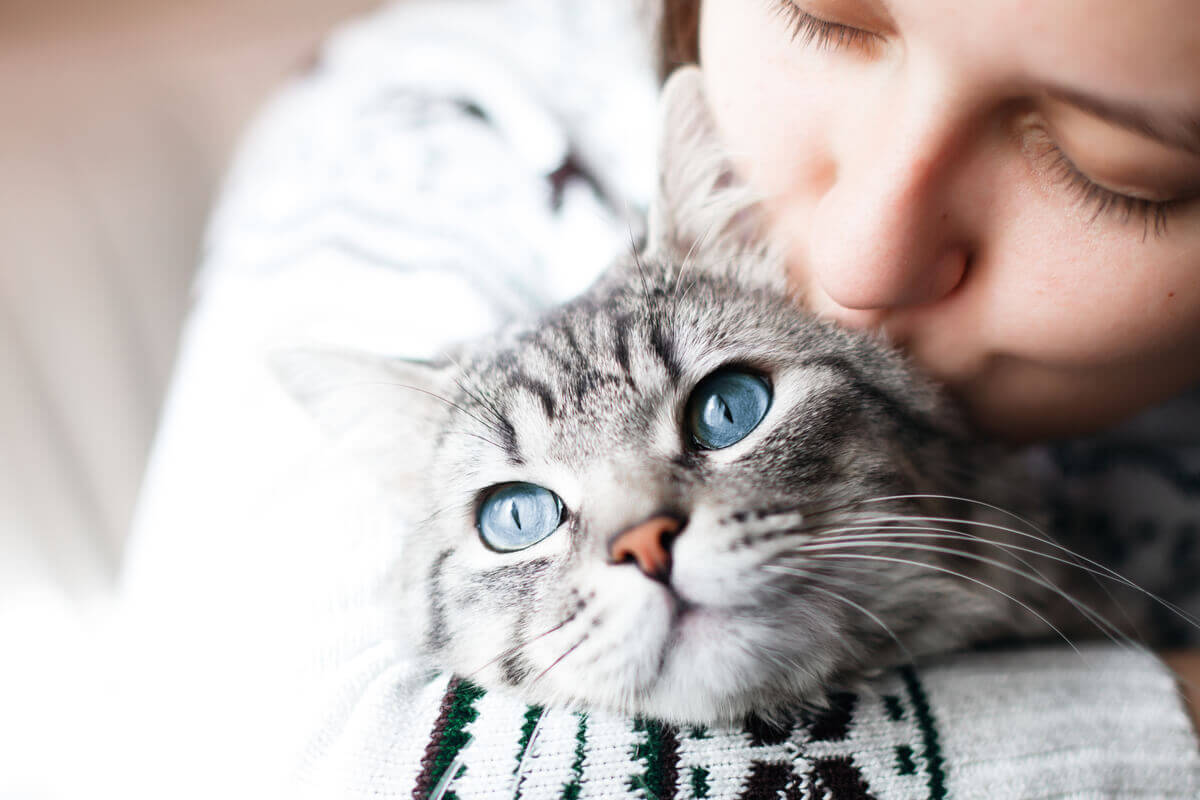A Cat's Social Interaction: 4 Interesting Facts

In Europe, there are more pet cats than dogs. Often, when cats and humans live together, it brings us the challenge of understanding their behavior. There’s a notion among specialists that a cat’s social interaction with humans is different from the interaction dogs have, for example.
Despite this, and according to various surveys, cat owners consider that the emotional bonds with their pets are comparable to bonds with dogs. Still, for many pet owners, elucidating feline behavior is rather challenging. And they’re not alone!
Animal behavior experts are also aware of how much we still need to learn about this topic. For this reason, if you share your life with a cat, you’ll likely be interested in reading more! These four tips could help you interpret a cat’s social interaction.
1. Cats and dogs respond similarly to some tasks
First, it’s important to recognize that there’s a difference in the domestication process and history that cats and dogs went through. It’s clear that cats weren’t selected to perform different tasks, whereas this did occur with dog domestication.
Despite this fact, the need for a fluid coexistence with humans may have been a selective pressure strong enough to influence some feline abilities. Supporting this idea, several scientific studies report similar performance both in cats and dogs when performing various tasks.
For example, a case where both species share similarity is when choosing between two objects that hide a reward by following a person’s pointing gestures. This has been observed either by pointing at the object or by the animal following the human’s gaze.
Cats and dogs have also been reported to rely on their owner’s reaction when faced with unknown objects.
Studies indicate that some of the socio-cognitive abilities of cats may be analogous to those observed in dogs.

2. A cat’s social interaction preference is with humans
In 2017, U.S. researchers conducted a study in which adult cats in two populations (Pet Cats and Shelter cats) were presented with three stimuli divided into four categories. The four categories were human social interaction, food, toys, and scents.
- Although there was a clear individual variability in the cats’ preference, social interaction with humans was the preferred stimulus category for most cats (50%).
- The second place was followed by food stimulation (37%).
The report indicates that results were similar for cats living as pets and those living in shelters. Interesting, isn’t it?
3. Cats can adjust their behavior to the quality of the social interaction the person provides
We should mention that several species, including dogs, pigs, jackdaws, and several primates can perceive the degree of human attention. Thus, these animals adapt and modify their behavior in response to attentive and inattentive humans.
In 2016, experts reported that cats beg for food more intensely before attentive humans who provide visual and auditory signals. Another study noted that cats rubbed their heads and played more with attentive, interactive strangers than with passive strangers.
Recently, researchers have examined the influence of human attention (attentive or inattentive) in two groups of cats (pets versus shelter cats). The study evaluated proximity seeking and contact behavior in response to their own owners or with an unknown person.
This experiment showed that both groups of cats spent significantly more time in proximity and contact with the humans that were attentive.
Thus, these findings demonstrate that cats are sensitive to human social cues and tend to be more social with attentive human behavior. In addition, domestic cats don’t show a preference for their owners, but rather for the attention they receive.
4. A cat’s social interaction is sensitive to a human’s emotions and moods
According to several studies, a human’s mood can greatly affect a cat’s behavior. For example, cats were less likely to approach depressed owners. On the other hand, the felines were more compelled to be near cheerful and outgoing owners.
In this sense, we’ve learned that cats operate strongly by obeying their instinct. Thus, it’s possible that this reduced social interaction is due to a perceived threat in the environment. The cat may consider its owner’s state of mind as a threat or a reason to feel mistrust.
Occasionally, in everyday life, their reasons for apparent apathy may be as simple as boredom. If their owners abuse the use of candy or a certain toy, its effect may very quickly become boring.
In these circumstances, it’ll be necessary to find new stimuli to reinforce the cat’s social interaction with its owner.

Final note
Future research will improve our understanding of factors that influence a cat’s ability to detect human signals. These signals can include emotional attachments or attention states.
All of these feline senses may have made it easier for cats to obtain vital resources from humans. We’re talking about obtaining food, shelter, and social care. Undoubtedly, the development of these feline adaptations is important for the evolution of social behavior and the relationship between our species.
All cited sources were thoroughly reviewed by our team to ensure their quality, reliability, currency, and validity. The bibliography of this article was considered reliable and of academic or scientific accuracy.
- Pongrácz, P., & Onofer, D. L. (2020). Cats show an unexpected pattern of response to human ostensive cues in a series of A-not-B error tests. Animal Cognition, 1-9. https://link.springer.com/content/pdf/10.1007/s10071-020-01373-4.pdf
- Pongrácz, P., Szapu, J. S., & Faragó, T. (2019). Cats (Felis silvestris catus) read human gaze for referential information. Intelligence, 74, 43-52. https://www.sciencedirect.com/science/article/abs/pii/S0160289618300035
- Miklósi, Á., Pongrácz, P., Lakatos, G., Topál, J., & Csányi, V. (2005). A comparative study of the use of visual communicative signals in interactions between dogs (Canis familiaris) and humans and cats (Felis catus) and humans. Journal of comparative psychology, 119(2), 179. http://citeseerx.ist.psu.edu/viewdoc/download?doi=10.1.1.531.1252&rep=rep1&type=pdf
- Merola, I., Lazzaroni, M., Marshall-Pescini, S. et al. (2015). Social referencing and cat–human communication. Anim Cogn 18, 639–648 https://doi.org/10.1007/s10071-014-0832-2
- Vitale, K. R. V., Mehrkam, L. R., & Udell, M. A. (2017). Social interaction, food, scent or toys? A formal assessment of domestic pet and shelter cat (Felis silvestris catus) preferences. Behavioural Processes, 141, 322-328. https://www.sciencedirect.com/science/article/abs/pii/S0376635716303424
- Vitale, K. R., & Udell, M. A. (2019). The quality of being sociable: The influence of human attentional state, population, and human familiarity on domestic cat sociability. Behavioural processes, 158, 11-17.
- https://www.sciencedirect.com/science/article/abs/pii/S0376635718300998
- Turner DC, Rieger G (2001) Singly living people and their cats: A study of human mood and subsequent behavior. Anthrozoos Multidiscip J Interact People Anim 14:38–46
